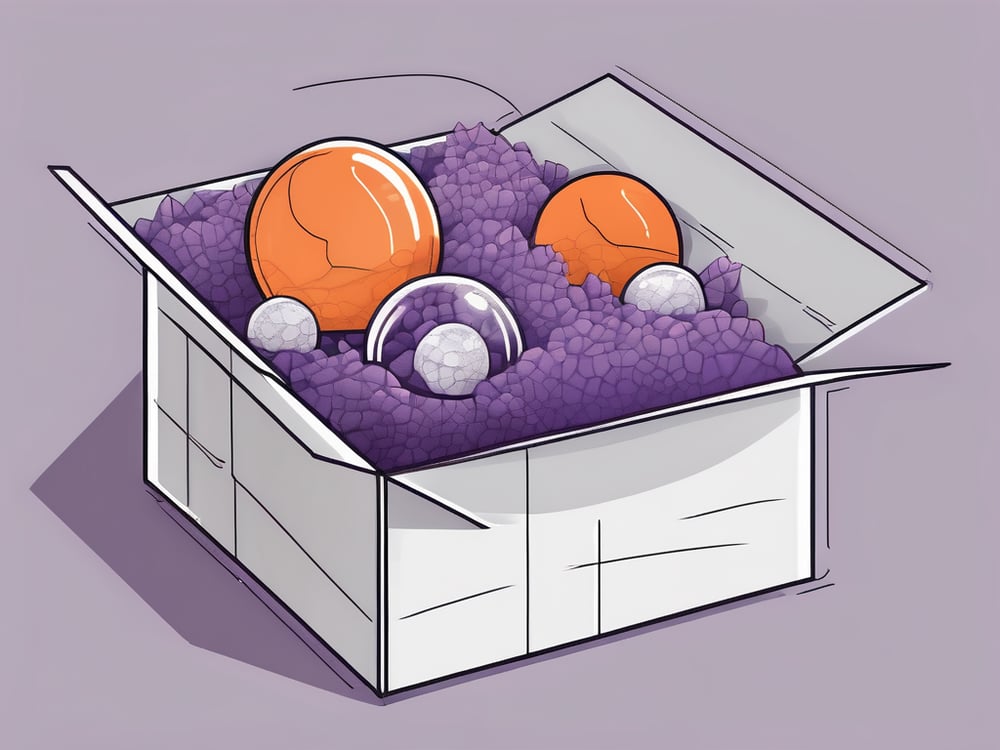Did you know that terrariums have become increasingly popular as indoor houseplants? These tiny ecosystems bring a touch of nature into any space and require minimal maintenance.
However, when it comes to shipping these delicate beauties, extra care must be taken to ensure they arrive intact. In this article, we will guide you through:
- The process of packaging terrariums for shipping
- How fragile terrariums are and how we can protect them
- The list of materials needed for packaging
- Additional tips and troubleshooting problems
So, let’s dive in and discover the secrets to packing and shipping terrariums successfully!
Table of Contents
ToggleHow to Package Terrariums for Shipping Like an Expert
Packaging terrariums for shipping involves using sturdy boxes and ample cushioning to ensure safe transit. But before packaging, make sure your terrarium is in optimal condition. If you’re selling terrariums online, Shopify fulfillment services can help streamline order processing and ensure secure shipping.
Inspect the plants for any signs of damage or disease, and remove any excess debris. Water your terrarium a day or two prior to shipping to ensure the plants are adequately hydrated.
Additionally, it is recommended to check the overall stability of the terrarium structure. Ensure that the glass container is not cracked or chipped, as this could lead to breakage during transit.
Take note of any loose components, such as decorative stones or figurines, and secure them in place to prevent shifting.
Wrapping and Securing the Terrarium
The key to secure packaging lies in cushioning the terrarium to absorb potential shocks during transit. Start by wrapping the entire container with a layer of bubble wrap.
Secure it in place with tape, ensuring that there are no loose ends. To further protect delicate elements, use foam inserts to immobilize the plants from shifting within the glass container.
For added protection, consider double-boxing your terrarium. Place the wrapped terrarium in a smaller box filled with packing material, then put this box inside a larger box with additional cushioning.
This extra layering can provide enhanced shock absorption, especially for fragile terrariums with intricate designs.
Placing the Terrarium in the Box
Carefully place your wrapped terrarium in the center of the box, making sure it is well-centered and secure. Fill any empty spaces with packing peanuts to prevent movement during shipping. Close the box and seal it with sturdy packing tape, ensuring all edges are properly secured.
Label the box with appropriate signage such as “Fragile” or “Live Plants” to alert handlers to the delicate nature of the package.
This can help reduce the risk of rough handling during transit. Consider adding instructions for the recipient on how to unpack the terrarium safely to ensure it arrives intact and ready to be displayed.
The Fragility of Terrariums and How It Affects Packing and Shipping Approach
Terrariums are self-contained miniature gardens housed within glass containers. Their delicate nature stems from the close interaction between plants and their enclosed environment.
The glass walls provide protection, but they can also make terrariums susceptible to damage during transportation. Understanding this fragility is crucial for successful packaging.
One fascinating aspect of terrariums is their ability to create a self-sustaining ecosystem within a confined space. The plants inside release oxygen through photosynthesis, which is then used by microorganisms in the soil to break down organic matter.
This cycle of life within a terrarium is both delicate and beautiful, highlighting the intricate balance required for these miniature gardens to thrive.
The Importance of Proper Packaging
Proper packaging ensures that terrariums arrive safely and that all elements within the glass container remain intact. Fragile components, such as delicate plants, may require additional protection to avoid breakage or dislodgment.
By employing the right packaging techniques, you can minimize the risks and give your terrarium the best chance of surviving the journey.
Additionally, the choice of packaging materials can impact the overall health of the terrarium during transit. Opting for cushioning materials that provide shock absorption, such as biodegradable packing peanuts or bubble wrap, can help mitigate any potential damage caused by rough handling or sudden impacts.
Common Damage Issues in Shipping Terrariums
When shipping terrariums, several potential damage issues may arise. The most common problems include shifting soil, broken glass, and damaged plants. To address these concerns, it is essential to follow precise packaging instructions and take preventive measures.
Furthermore, temperature control during shipping plays a crucial role in ensuring the well-being of the plants inside the terrarium. Extreme heat or cold can have detrimental effects on the delicate balance of the enclosed ecosystem. Implementing insulated packaging or heat packs in colder climates can help maintain a stable environment for the plants throughout the journey.
What Do You Need to Pack a Terrarium Properly?
Before diving into the packaging process, you will need to gather a few materials. These items will help keep your terrarium safe and secure during transit. Ensure you have bubble wrap, packing peanuts, foam inserts, packing tape, and labels on hand.
Now let’s begin the packaging process.
- Choose a sturdy corrugated cardboard box: Opt for a box that provides ample space around the terrarium and is strong enough to withstand handling.
- Add extra space around the terrarium for cushioning: Leave enough room in the box to accommodate cushioning materials and create a buffer zone to absorb impacts.
- Utilize protective supplies like bubble wrap and packing peanuts: Wrap the terrarium in bubble wrap and surround it with packing peanuts to prevent movement and protect it from damage.
- Layer cushioning materials for added protection: Start with a base of packing peanuts, place the terrarium in the center, surround it with bubble wrap, and fill any remaining gaps with more packing peanuts.
- Seal the box securely with packing tape and label it appropriately: Use strong packing tape to seal all seams and corners of the box, and label it as fragile to alert handlers to its delicate contents.
Understanding small parcel shipping strategies can help reduce costs while ensuring fragile items arrive safely.
Bonus Tips for Shipping Terrariums
Just to fully ensure safety and smooth nature of the shipment, here are a few additional tips to help you during the process.
Labeling Your Package
After securely packaging your terrarium, don’t forget to apply clear and visible labels to the box. Include both the sender’s and recipient’s addresses, as well as any fragile or handle-with-care warnings. This ensures that the shipping carrier handles your package with the necessary care.

When labeling your package, consider adding additional instructions such as “This Side Up” or “Do Not Stack.” Utilizing pick and pack fulfillment services can also improve handling efficiency. Including these details can help ensure that your terrarium arrives at its destination intact and undamaged.
Choosing a Reliable Shipping Company
Selecting a reliable shipping company is crucial when shipping fragile items like terrariums. Explore international fulfillment services for seamless global shipping solutions. Research various carriers and choose one with a track record of handling delicate packages with care. Opt for a shipping method that includes insurance to protect your terrarium and give you peace of mind.
Before finalizing your shipping company choice, read reviews and testimonials from other customers to gauge their experiences with shipping fragile items.
Additionally, consider reaching out to the company directly to inquire about their specific handling procedures for delicate packages like terrariums. This extra step can help you make an informed decision and ensure the safe delivery of your terrarium.
Troubleshooting Common Packaging Problems
Dealing with Loose Soil or Plants
If you find that soil or plants have become displaced during shipping, carefully open the terrarium and restore everything to its original position. Use clean tools and ensure the plants remain well-rooted. Add any necessary substrate or extra support to secure the plants in place.
It is essential to pay close attention to the type of plants being shipped and their specific needs. Some plants may require more delicate handling or specific environmental conditions during transit.
Researching the individual plant species and their shipping requirements can help prevent issues such as soil displacement or plant damage. Additionally, providing clear care instructions to the recipient upon delivery can ensure the plants thrive in their new environment.
Addressing Broken Glass Issues
Despite taking precautions, there is always a small chance that the glass container may break during shipping. If this unfortunate event occurs, contact the recipient immediately and offer them a refund or replacement. Properly handle the broken glass, ensuring no one gets injured, and discard it safely.
In the rare event of broken glass, it is crucial to assess the extent of the damage to determine if the plants inside have been affected. If the plants have been compromised, provide guidance on how to repot them carefully to minimize stress and ensure their continued growth.
Transparency and prompt communication with the recipient can help maintain trust and ensure a positive customer experience, even in challenging situations.
Discover best practices for reducing shipping damages and ensuring fragile products arrive intact.
Gather Proper Materials and Ship Terrariums Confidently
Now that you have mastered the art of packaging terrariums for shipping, you can confidently send your stunning creations to plant enthusiasts around the world. Remember, attention to detail and using the right materials will ensure your terrariums arrive at their destination just as magnificent as when they left your care.
For businesses looking to streamline their shipping and fulfillment process, Fulfyld provides expert logistics solutions to ensure safe and efficient deliveries.
Safe travels!






